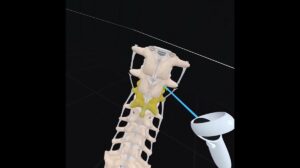NEW YORK (Reuters Health) – White matter (WM) hyperintensities seen on MRI brain scans correlate with gait and stability difficulties in elderly subjects, as well as with reduced measures of executive function, according to a report in the November issue of the Archives of Neurology.
Dr. Clifford R. Jack, Jr., with the Mayo Clinic in Rochester, Minnesota, and his colleagues conducted a cross-sectional population-based study to investigate WM hyperintensities in various brain regions in relation to motor and cognitive deficits in 148 subjects without dementia ranging in age from 73 to 91 years.
Gait, posture and balance were assessed using a walkway system as well as the Unified Parkinson’s Disease Rating Scale summary measures, and z scores were determined for four cognitive domains — memory, language, executive function, and visuospatial reasoning.
The team found that a greater proportion of WM hyperintensity (WMHp) in all regions except the occipital lobe correlated with worse performance in the executive function domain.
In terms of ambulation, a higher WMHp in all regions, but especially in the parietal lobe, correlated with higher (i.e., worse) scores for gait, posture and stability.
“There was no relationship between WMHp and the z scores for memory or language, but the visuospatial domain showed a trend toward worse performance with greater WMHp.”
Putting the findings together, Dr. Jack and colleagues hypothesize that “the WM changes alter integration of sensory information via parietal lobe dysfunction in the aging brain.”
They surmise that the primary effect of WM hyperintensities is to reduce the efficiency of neuronal signaling. “This conclusion is strengthened by the fact that vastly different functional domains — cognition and gait — were affected, with the common theme being processing speed.”
Reference:
Functional Impact of White Matter Hyperintensities in Cognitively Normal Elderly Subjects
Arch Neurol 2010;67:1379-1385.




